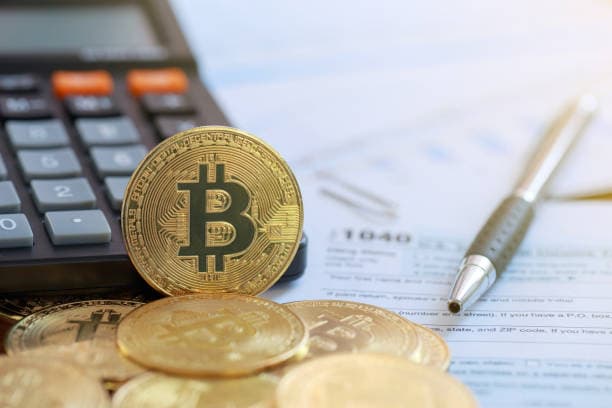Exchange Fee Modeling: Pricing and Rate Analysis
In the world of cryptocurrency trading, exchange fees are an important factor that no trader can afford to ignore. Whether you are a newbie or a seasoned veteran, choosing the most appropriate fee model will not only help you save on trading costs, but also enhance your overall trading experience. Today, we're going to take a closer look at the fee models of the major exchanges, including pricing structures and rate analysis, to help you better understand the differences in fees between different exchanges and pick the platform that's best for you.

Exchange Fee Modeling: How is the pricing structure determined?
When we talk about exchange fees, the first thing to understand is the pricing structure of the exchange. Most exchanges determine their fees based on the volume of trades, frequency of trades, and the platform used, etc. Generally, there are two types of exchange fees: Maker Fee and Taker Fee. Generally speaking, there are two types of exchange fees: the Maker Fee and the Taker Fee. Simply put, the Maker is the person who provides the liquidity (e.g., the person who places the order) and the Taker is the person who consumes the liquidity (e.g., the person who buys or sells the order in the market). Typically, the Maker Fee is lower because it helps to increase liquidity in the market, while the Taker Fee is higher because it is a way of trading that requires a rapid depletion of existing liquidity.
On some exchanges, these rates are also adjusted based on a user's trading volume or exchange token holdings. For example, Binance has a fee model that is based on a volume ladder, where the higher the volume, the lower the fee, while OKX offers the option to reduce fees by holding platform tokens such as OKB.
Relationship between Exchange Fee and Trading Volume
Trading volume usually has a direct impact on exchange fees. Most exchanges adjust their fees based on trading volume over the past 30 days. This is because exchanges want to incentivize more high-frequency traders to increase market activity. For example, if your monthly trading volume reaches a certain level, your handling fee can be as low as 0.02% (Maker) and 0.04% (Taker). For newbies or users with low trading volume, the handling fee may be higher.
Such a pricing model can be very advantageous for active traders, but it can also be a hidden burden that adds to the cost of trading for novice traders. Therefore, when choosing an exchange, it is important to know your expected trading volume and whether the exchange offers a fee waiver strategy that suits your needs.
Understanding the Hidden Costs of Exchanges
In addition to explicit trading fees, many exchanges charge hidden fees that are often less noticeable but can affect your final trading costs. For example, some exchanges may charge withdrawal or transfer fees, which may vary between currencies. Some platforms also charge API access fees or additional fees for using certain extra features.

For example, OKX offers a "no commission" promotion, but only for certain pairs of trades, and these promotions may expire after a certain period of time or at the end of the promotion. While such offers are certainly a benefit to short-term traders, long-term traders need to be especially aware of withdrawal and fund transfer fees. Being aware of these hidden fees will help you calculate the total cost of each transaction more accurately and avoid additional expenses.
How can I avoid hidden fees?
To avoid getting stuck with hidden fees, you first need to carefully review each exchange's fees page to understand all possible fee items. Choose exchanges that offer a clear and transparent fee structure and calculate all possible fees before you trade, including withdrawal fees, transaction fees and other hidden charges. Many exchanges will have a full description of their fees on their website so you can make the best choice for your needs.
Comparison of Fee Models of Different Exchanges
When choosing an exchange, it is important to understand the fee structure of different platforms to help you make a more cost-effective choice. For example, Binance and OKX are two of the most well-known trading platforms in the market today, and each of them has its own unique fee structure.
Coin's fee model is relatively flexible and is adjusted based on a user's trading volume, the amount of BNBs (Coin's native tokens) held, and other conditions. For example, if you hold a certain amount of BNB tokens, you can enjoy a discount. CoinAnn's trading fees are tiered for high volume users, with rates up to 0.02% (Maker) and 0.04% (Taker), and it offers a VIP program designed for institutional and professional traders.
In contrast, OKX offers a different rate model that allows users to enjoy discounts by holding OKB tokens, which is a great advantage for long-term holders, and OKX's VIP system is also very rich, allowing traders ranging from general traders to professional traders to receive different levels of fee discounts according to their needs.
Of the two exchanges, Coin's fee-based model is more suitable for most active traders, while Ouyi is more flexible in terms of certain features and token offers.
Choose the most suitable exchange
When choosing an exchange, the fee is only one of the factors to be considered, and there is also a need to pay attention to the security of the platform, liquidity, customer support and many other factors. It is recommended that you make a detailed comparison before choosing an exchange and select the most suitable fee structure for your trading needs.
How can I lower my transaction fees?
Some exchanges offer various ways to help users reduce their fees, for example:
- Use of platform tokens: Many exchanges offer their own platform tokens (e.g. BNB, OKB) as a way to pay for trading fees. By using these tokens to pay for your trading account, you can often get additional discounts.
- Increased trading volume: Many exchanges offer fee reductions based on a user's trading volume. The higher the trading volume, the lower the fee you have to pay. This is a strategy that encourages high-frequency traders.
- Join VIP Program: Some exchanges have VIP programs that allow high-frequency traders or high-volume traders to enjoy preferential handling fees. Depending on the VIP level, the user's handling fee can be significantly reduced.
Conclusion: Choosing the right fee model is crucial.
Understanding the fee structure of exchanges and choosing the platform that best suits your needs is a fundamental skill that every cryptocurrency trader should master. Whether you are a novice or an experienced trader, you need to carefully compare the fee models of different exchanges and choose the option that best suits your trading habits in order to maximize your trading benefits.
Frequently Asked Questions Q&A
1. How do I know what the handling fee is for the Exchange?
Most exchanges list the full fee structure on their official website, usually found in the Help Center or on the Fee Explanation page. If you are unsure, you can check this information or contact customer service for more information.
2. Will the exchange fee affect my investment return?
Yes, especially for investors who trade frequently, the impact of fees on investment returns can be relatively large. Choosing a low-fee exchange can help you save a lot of money.
3. If I want to reduce my handling charges, what are the ways to do so?
You can reduce the handling fee by increasing your trading volume, holding platform tokens, joining VIP program and so on. Different platforms have different promotional strategies, so you can choose the most suitable way according to your needs.














